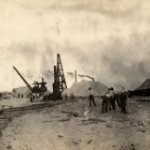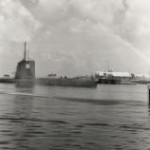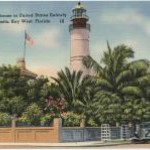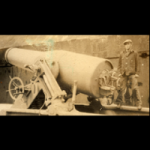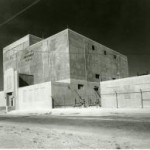Military
The Outer Mole
The origins of the Mole Pier date back to several years before the Civil War. It was a wooden dock for Fort Taylor. With plans to expand the Naval Station into a submarine base following World War I, engineers redesigned and extended the pier as a concrete breakwater for the harbor. The Navy retained ownership of the pier after the sale of the Naval Station in 1986. It is currently used by the Navy, Coast Guard, NOAA, and cruise ships.
Submarine Base
Following World War I, the Naval Station transformed the waters inside of the Outer Mole Pier into a submarine training base. Five metal “finger†docks were built to service submarines. During World War II, German U-boats sank 49 ships off the coast of Florida. The primary role of submarines stationed here during World War II was the destruction of enemy ships and protection of Allied supply convoys in the Atlantic. The base was decommissioned in 1974 as nuclear submarines replaced diesel powered ones.
Lighthouse & Keepers Quarters
In 1823, the "U.S. Navy established a base in Key West and the need for a lighthouse became evident. Erecting a warning beacon was essential to reduce shipwrecks on the treacherous reefs surrounding the island. By the mid-1800s there was an average of one wreck per week. The first lighthouse was constructed in 1825 and washed out to sea by the 1846 hurricane. The current structure, built in 1847, stands 14' above sea level with a Keeper's Quarter added in 1887.
Fort Zachary Taylor
One of 3 civil war era forts built in Key West. At the onset of the Civil War, the Union seized control of the fort preventing it from falling into Confederate hands. It played an important role curtailing the threat of blockade runners. Originally, the fort was a 3 story fortification surrounded by water on all sides. With advances in gunnery the structure was reduced to one story at the turn of the twentieth century. The fort was heavily used again during the 1898 Spanish-American War.
Steam Plant
The Steam Plant's facade endures as an example of Art Deco design that was popularized during the Great Depression. It is one of the few art deco structures in Key West. Streamline Modern was a reaction to Victorian building ornamentation that was the predominant building style for decades. The new style embraced simple lines and aerodynamic curves. It was built by the city in 1951 on new land that industrialist Henry Flagler created for the train depot of his Over-Sea Railroad.
